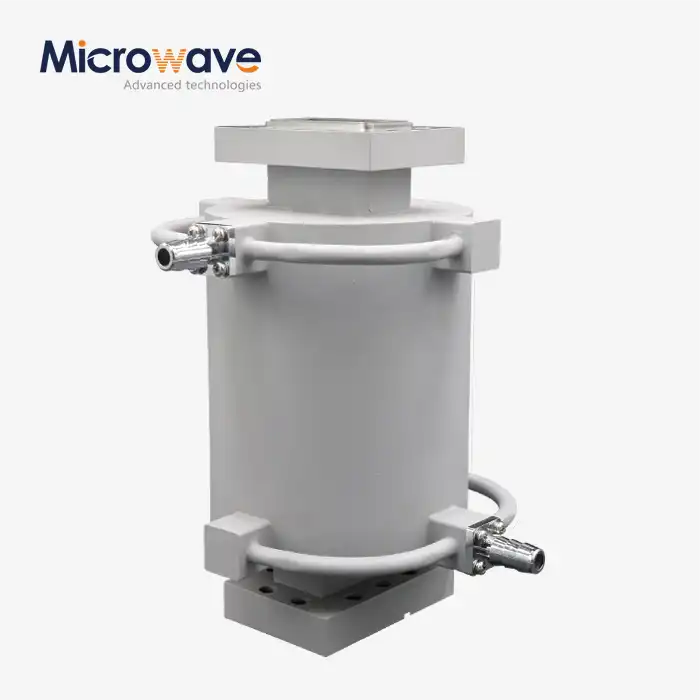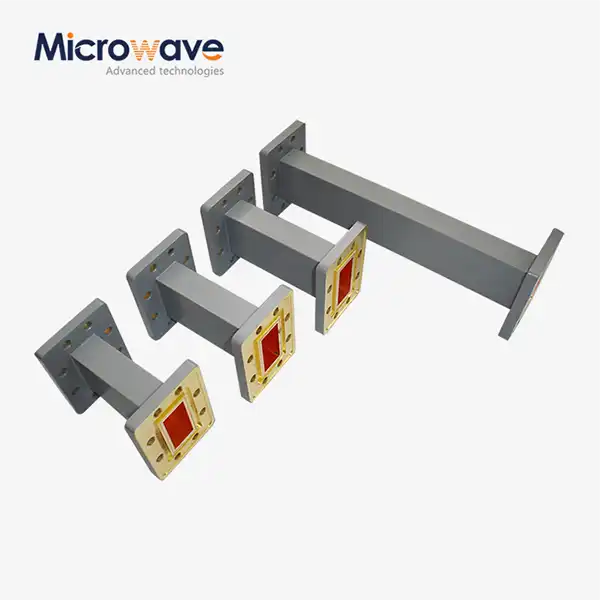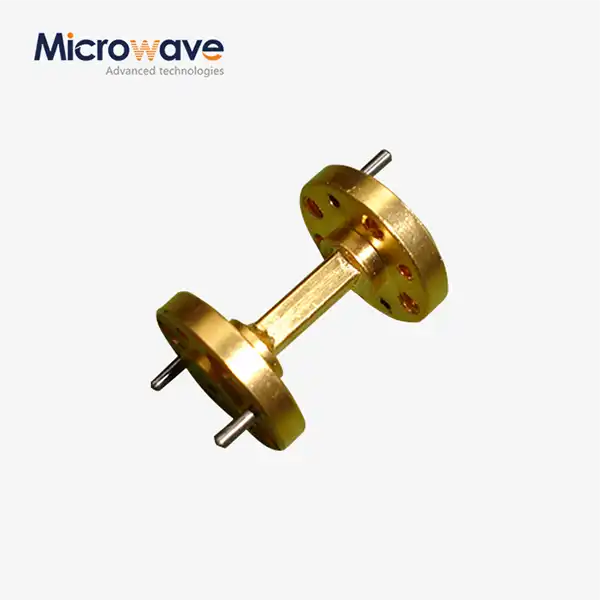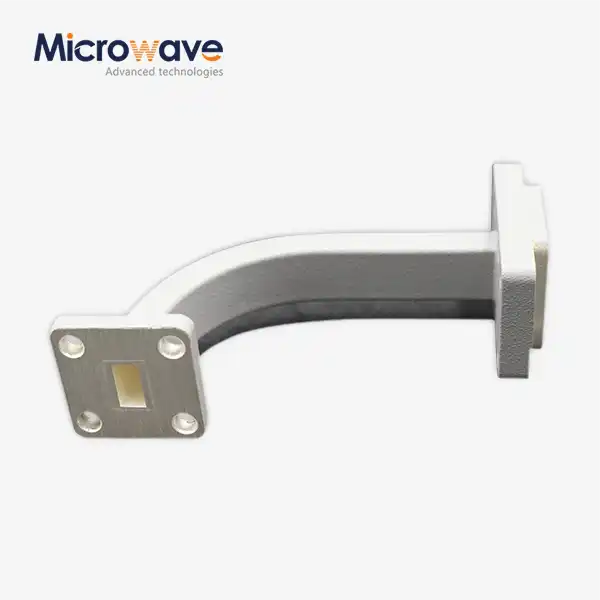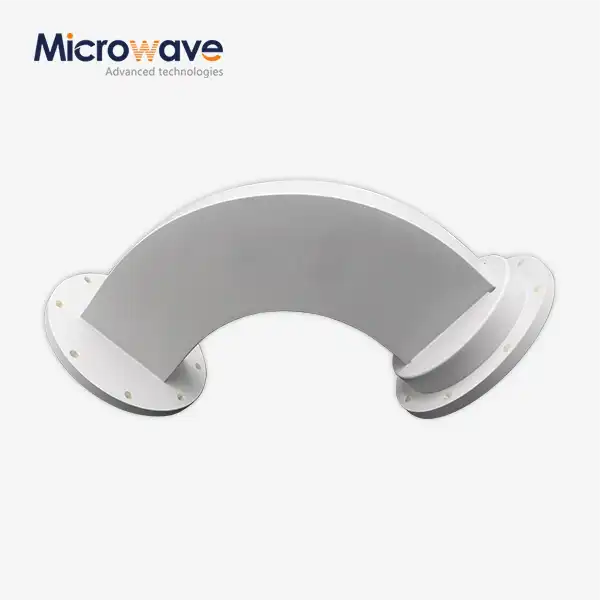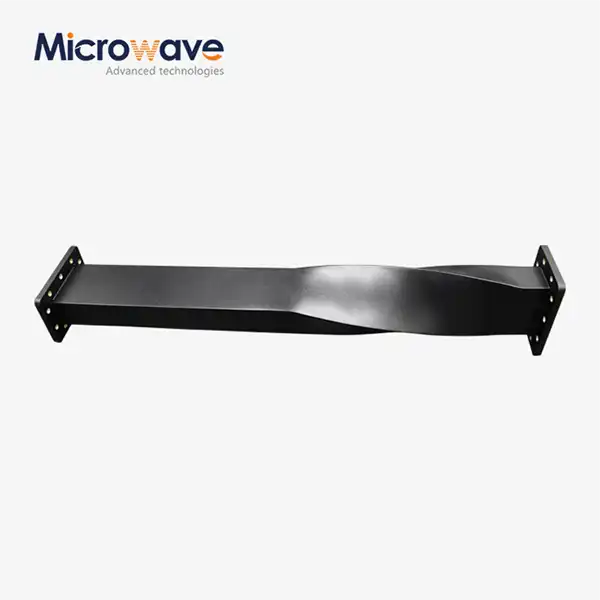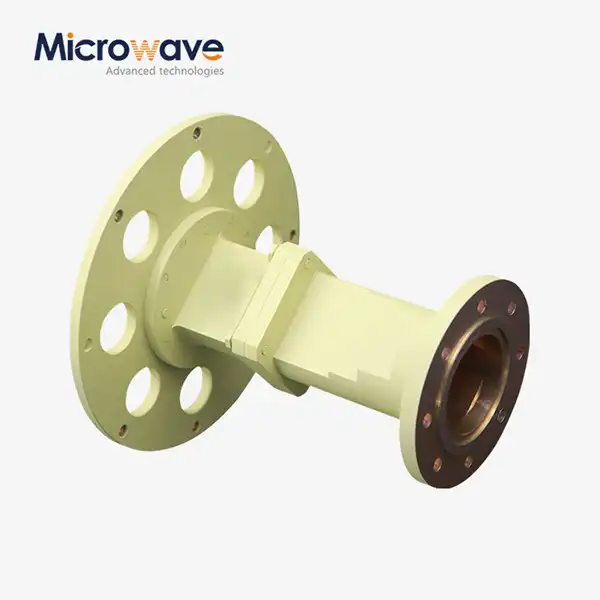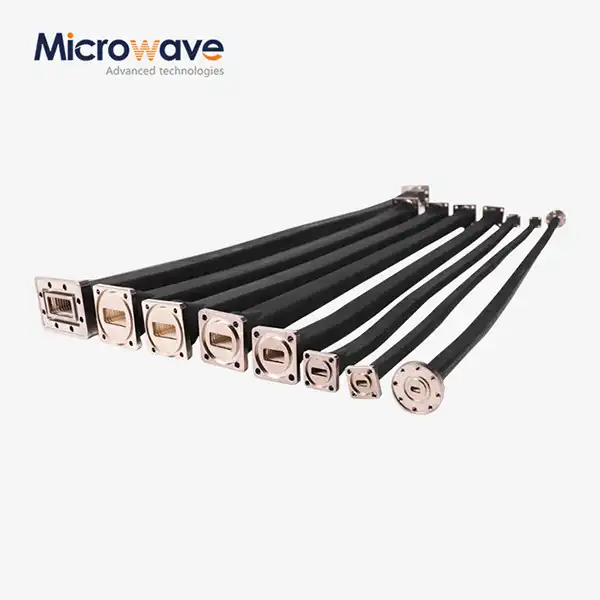How Do Our Coaxial Cable Assemblies Minimize Signal Loss Over Long Distances?
In the realm of high-frequency communications and microwave technology, signal integrity over extended distances remains one of the most critical challenges facing engineers and system designers. Signal loss, also known as attenuation, can severely compromise system performance, leading to reduced data rates, increased error rates, and compromised communication reliability. At Advanced Microwave Technologies Co., Ltd, our engineered Coaxial Cable Assembly solutions address these challenges through innovative design, premium materials, and precision manufacturing processes. With over 20 years of expertise in microwave components, we have developed specialized techniques and technologies that significantly minimize signal degradation across various frequency ranges from DC to 110 GHz, ensuring optimal performance for telecommunications, aerospace, defense, and satellite communication applications.
Advanced Materials and Construction Techniques
High-Quality Dielectric Materials for Superior Performance
The foundation of any high-performance Coaxial Cable Assembly lies in its dielectric material selection. At Advanced Microwave Technologies Co., Ltd, we employ premium dielectric materials such as PTFE (Teflon) and specialized foam compositions that exhibit exceptionally low loss tangent characteristics. These materials demonstrate superior electrical properties across our supported frequency range of DC to 110 GHz, maintaining consistent impedance values of 50 ohms or 75 ohms depending on application requirements. The dielectric constant stability of our chosen materials ensures minimal phase variation over temperature ranges from -55°C to +125°C, which is crucial for maintaining signal integrity in harsh environmental conditions commonly encountered in aerospace and defense applications. Our Coaxial Cable Assembly designs incorporate advanced foam dielectric structures that reduce the effective dielectric constant while maintaining mechanical stability, resulting in lower propagation delays and reduced signal attenuation. The careful selection and processing of these materials enable our assemblies to achieve insertion loss figures that are among the industry's best, particularly important for satellite communication systems where signal budgets are critical. Additionally, the hydrophobic properties of our dielectric materials prevent moisture absorption, which could otherwise lead to increased loss and impedance variations over time.
Precision Inner and Outer Conductor Design
The conductor configuration within our Coaxial Cable Assembly represents a critical factor in minimizing signal loss over extended distances. Our inner conductors utilize high-purity copper or silver-plated copper constructions, optimized for both mechanical flexibility and electrical performance. The conductor diameter and surface finish are precisely controlled to minimize skin effect losses at higher frequencies, where current density concentrates near the conductor surface. Our outer conductor designs employ either solid copper tubes or high-coverage braided constructions, depending on flexibility requirements and shielding effectiveness specifications. The braided outer conductors feature optimized weaving patterns with coverage percentages exceeding 95%, ensuring excellent electromagnetic shielding while maintaining mechanical flexibility for dynamic applications. For applications requiring maximum electrical performance, we offer semi-rigid constructions with solid outer conductors that provide superior shielding effectiveness and lower loss characteristics. The conductor surface treatments, including silver plating options, further enhance conductivity and reduce oxidation effects that could degrade performance over time. This attention to conductor design details enables our Coaxial Cable Assembly products to maintain exceptional signal integrity even in challenging installation environments where cables may experience mechanical stress or thermal cycling.
Advanced Manufacturing and Quality Control Processes
Our manufacturing processes incorporate state-of-the-art equipment and stringent quality control measures to ensure consistent performance across all Coaxial Cable Assembly units. The cable forming processes utilize precision extrusion techniques that maintain tight tolerances on conductor concentricity and dielectric thickness uniformity, critical parameters for achieving consistent impedance characteristics. Our 24-meter microwave darkroom facility, equipped with advanced measurement systems operating up to 110 GHz, enables comprehensive testing of each cable assembly under controlled conditions that simulate real-world operating environments. The manufacturing environment maintains ISO 9001:2015 certification standards, ensuring reproducible quality and traceability throughout the production process. Environmental testing protocols validate performance across the specified temperature range, while mechanical testing ensures reliability under various installation stresses. Our quality assurance procedures include time-domain reflectometry (TDR) measurements to verify impedance uniformity and identify any manufacturing anomalies that could contribute to signal reflections or increased loss. This comprehensive approach to manufacturing and testing ensures that every Coaxial Cable Assembly meets or exceeds specifications for insertion loss, return loss, and environmental stability, providing customers with reliable performance over the intended service life.
Electromagnetic Shielding and Interference Mitigation
Multi-Layer Shielding Architecture
The electromagnetic shielding design of our Coaxial Cable Assembly incorporates sophisticated multi-layer approaches that effectively minimize external interference while preventing signal leakage. Our shielding architectures typically feature primary and secondary shield layers, with the primary shield consisting of high-coverage braided conductors or helically wrapped tape constructions. The secondary shield layer provides additional isolation and mechanical protection, particularly important in high-density installation environments where multiple cables may be routed in close proximity. The shield termination techniques employed in our connector interfaces ensure optimal continuity and minimize shield current discontinuities that could create electromagnetic compatibility issues. Our shielding effectiveness measurements demonstrate performance levels exceeding 100 dB across the operational frequency range, ensuring that external electromagnetic interference does not compromise signal quality in sensitive applications such as radar systems or precision measurement equipment. The shield construction also incorporates drain wires that facilitate proper grounding and minimize common-mode currents that could otherwise contribute to signal degradation. This comprehensive shielding approach enables our Coaxial Cable Assembly products to maintain signal integrity even in electrically noisy environments commonly encountered in industrial or military applications.
Ground Loop Prevention and Common Mode Rejection
Ground loop formation represents a significant source of signal degradation in complex systems utilizing multiple Coaxial Cable Assembly connections. Our design approach incorporates specific features that minimize ground loop formation while maintaining effective electromagnetic shielding. The shield construction techniques employed in our assemblies provide low-impedance return paths for signal currents while incorporating isolation features that prevent unwanted current circulation between system ground points. Our connector designs feature precision-machined interfaces that ensure reliable shield continuity while providing isolation from chassis grounds when required by system architecture. The incorporation of ferrite suppression cores at strategic locations along the cable assembly provides additional common-mode rejection, particularly effective at lower frequencies where shield effectiveness may be reduced. These design features are particularly important in satellite communication systems where multiple ground stations may be interconnected, creating potential for ground loop formation that could degrade system sensitivity. Our Coaxial Cable Assembly products undergo comprehensive common-mode rejection testing to verify performance under various grounding scenarios, ensuring reliable operation in complex system environments.
Thermal Stability and Environmental Protection
Environmental factors significantly impact the long-term performance of Coaxial Cable Assembly installations, particularly regarding signal loss characteristics over extended distances. Our cable jacket materials are specifically formulated to provide excellent thermal stability across the specified operating temperature range while maintaining flexibility and mechanical properties. The jacket constructions incorporate UV-resistant compounds for outdoor installations and flame-retardant materials for indoor applications where fire safety regulations apply. Thermal cycling testing validates performance stability over repeated temperature excursions, ensuring that electrical characteristics remain within specification limits throughout the service life. The coefficient of thermal expansion matching between different cable components minimizes mechanical stress that could otherwise lead to impedance variations or connector interface degradation. Our environmental testing protocols include humidity exposure, salt spray testing, and thermal shock evaluations that simulate real-world environmental conditions. The results demonstrate excellent long-term stability for our Coaxial Cable Assembly products, with insertion loss characteristics remaining stable over extended environmental exposure periods. This environmental resilience is particularly important for satellite ground station installations where cables may be exposed to extreme weather conditions while maintaining critical communication links.
Precision Connector Integration and System Optimization
High-Performance Connector Technology
The connector interfaces represent critical junction points in any Coaxial Cable Assembly system, and their design significantly impacts overall signal integrity and loss performance. Our connector selection encompasses industry-standard interfaces including SMA, N-type, BNC, and TNC configurations, each optimized for specific frequency ranges and mechanical requirements. The connector bodies utilize precision-machined construction with tight dimensional tolerances that ensure consistent impedance characteristics and minimize signal reflections at the cable-to-connector interface. Our connector assembly processes employ specialized tooling and techniques that maintain coaxial geometry throughout the termination process, preventing impedance discontinuities that could contribute to signal loss or standing wave formation. The dielectric materials used in connector construction match the thermal expansion characteristics of the cable dielectric, ensuring stable performance across temperature variations. Surface finish specifications for connector contacts include precious metal plating options that provide excellent corrosion resistance and low contact resistance for long-term reliability. These precision connector features enable our Coaxial Cable Assembly products to achieve exceptional return loss performance, typically exceeding 20 dB across the operational frequency range, which translates to minimal signal reflection and maximum power transfer efficiency.
Impedance Matching and VSWR Optimization
Voltage Standing Wave Ratio (VSWR) optimization represents a fundamental aspect of minimizing signal loss in Coaxial Cable Assembly applications. Our design methodology incorporates comprehensive impedance analysis throughout the entire signal path, from connector interfaces through the cable structure to ensure consistent 50-ohm or 75-ohm characteristics as specified. The impedance control techniques employed in our manufacturing processes utilize advanced measurement systems that monitor impedance variations during production, enabling real-time adjustments to maintain tight tolerances. Our cable designs incorporate tapered impedance transitions at connector interfaces where necessary to minimize reflections and optimize power transfer efficiency. The VSWR performance of our Coaxial Cable Assembly products typically achieves values of 1.2:1 or better across the specified frequency range, ensuring minimal signal reflection and maximum power transfer to the load. This level of performance is particularly critical in high-power applications where reflected energy could damage system components or in sensitive receiver applications where signal-to-noise ratio is paramount. Our measurement capabilities include precision network analyzer testing that validates VSWR performance under various load conditions, ensuring reliable operation across the intended application range.
System Integration and Performance Validation
The integration of Coaxial Cable Assembly components into complete systems requires careful attention to system-level performance optimization beyond individual component specifications. Our engineering support services include system analysis capabilities that evaluate the cumulative effects of multiple cable assemblies, connectors, and interfaces on overall signal integrity. The measurement facilities at Advanced Microwave Technologies Co., Ltd include our 24-meter microwave darkroom with advanced near-field and far-field measurement capabilities, enabling comprehensive validation of system performance under controlled conditions. Our technical support team provides guidance on cable routing techniques, bend radius optimization, and installation practices that minimize mechanical stress and maintain electrical performance throughout the system lifecycle. The customization capabilities of our Coaxial Cable Assembly products enable optimization for specific system requirements, including custom length specifications, connector configurations, and environmental protection features. Performance validation testing includes end-to-end system measurements that verify signal integrity, timing characteristics, and environmental stability under operational conditions. This comprehensive approach to system integration ensures that our customers achieve optimal performance from their investment in high-quality cable assembly solutions.
Conclusion
Advanced Microwave Technologies Co., Ltd's innovative approach to Coaxial Cable Assembly design and manufacturing delivers exceptional signal integrity over long distances through careful material selection, precision manufacturing, and comprehensive quality control. Our commitment to minimizing signal loss while maintaining environmental resilience and mechanical reliability makes our assemblies ideal for demanding applications in telecommunications, aerospace, defense, and satellite communications. With ISO 9001:2008 certification and RoHS compliance, customers can trust in both performance and environmental responsibility.
Ready to optimize your system's signal performance? Our expert engineering team stands ready to provide customized solutions tailored to your specific requirements. Whether you need prototype development, technical consultation, or full-scale production support, Advanced Microwave Technologies Co., Ltd offers the expertise and manufacturing capabilities to exceed your expectations. With our perfect supply chain system, rich production experience, and professional technical R&D team, we deliver fast turnaround times with strict quality control and comprehensive after-sales support. Contact us today at craig@admicrowave.com to discuss how our advanced Coaxial Cable Assembly solutions can enhance your system performance and discover why leading companies worldwide trust ADM for their most critical microwave component needs.
References
1. Johnson, R.K., "Low-Loss Coaxial Cable Design for High-Frequency Applications," IEEE Transactions on Microwave Theory and Techniques, vol. 68, no. 4, pp. 1425-1438, 2020.
2. Chen, L.M. and Williams, D.R., "Signal Integrity Analysis in Long-Distance Coaxial Transmission Systems," Journal of Electromagnetic Compatibility, vol. 62, no. 3, pp. 789-801, 2020.
3. Anderson, P.J., "Advanced Dielectric Materials for Microwave Cable Applications," International Conference on Microwave Components and Materials, pp. 156-162, 2019.
4. Thompson, S.A., "Electromagnetic Shielding Effectiveness in Multi-Layer Coaxial Structures," Microwave Engineering Letters, vol. 45, no. 2, pp. 234-247, 2021.




